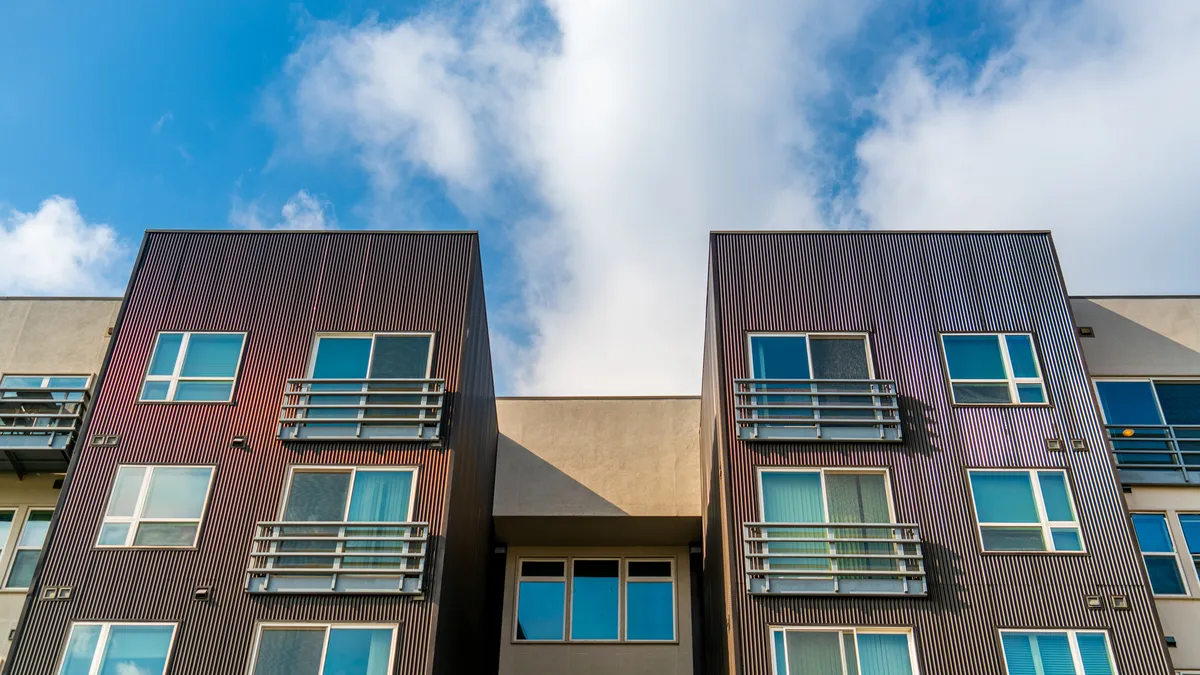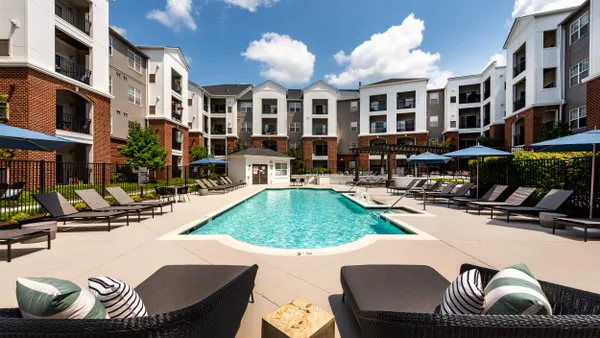Dive Brief:
- Delinquency rates for mortgages backed by multifamily properties increased in the first quarter of 2023, according to the Mortgage Bankers Association's latest commercial real estate finance loan performance survey.
- Delinquent multifamily balances increased by 0.5% to 0.7%. By comparison, 5.6% of the balance of lodging loans were 30 days or more delinquent. Retail loan balances sat at 4.6%, and office property loans were at 2.7%.
- Zeroing in on apartment-focused lending sources, 0.8% of FHA multifamily and healthcare loan balances were 30 days or more delinquent, which was unchanged from last quarter. A tiny percentage, 0.3%, of GSE loan balances were delinquent, up 0.2% from last year.
Dive Insight:
MBA's CREF Loan Performance survey collected information on commercial and multifamily mortgage portfolios as of March 31. The association isn’t alone in noting an increase in multifamily delinquency rates. The delinquency rate for multifamily CMBS loans rose eight basis points to 1.91% in Q1, according to Trepp. Twelve months ago, it sat at 1.53%.
The servicing rate for multifamily loans financed with commercial mortgage-backed securities jumped 34 basis points to 3.04% in March. Twelve months ago, it sat at 1.66%. Multifamily accounted for 10% of the loans transferred into special servicing, according to Trepp.
Some high-profile multifamily properties have gone into servicing over the past six months. After Veritas Investments, The Chetrit Group and Blackstone saw properties face issues, Laguna Point Properties fell behind on a $329 million loan backing a portfolio of more than 1,000 apartments in Los Angeles, according to The Real Deal.
In addition, Arbor Realty Trust foreclosed on four Houston apartment properties totaling 3,200 units after Dallas-based Applesway Investment Group defaulted on nearly $230 million in loans earlier this month.
Jamie Woodwell, MBA's head of commercial real estate research, said there are multiple factors causing problems for property owners.
“Higher and volatile interest rates, coupled with uncertainty about property values and some property fundamentals, are suppressing sales transaction and mortgage origination volumes. Some loans maturing into these conditions are likely to face increased frictions, which is likely to push further on delinquency rates in coming quarters,” Woodwell said in a release.
In a better position
Still, multifamily seems to be in better shape than other sectors. Last year, multifamily properties saw the highest loan volume at $437 billion of total lending and $333 billion of mortgage bankers’ originations, according to a separate MBA report.
“Borrowing and lending backed by commercial and multifamily properties started 2022 strong but then dropped off because of rising interest rates, uncertainty about property values, and increased questions about the economy and some property fundamentals,” Woodwell said in a release.
Although depositories were the leading capital source with $408 billion of total commercial and multifamily lending in 2022 and $189 billion of mortgage bankers originations, multifamily stalwarts Fannie Mae and Freddie Mac were second with total volume at $128 billion.
The agencies should continue to be key players in the multifamily market this year. “When you look at initiatives like Fannie and Freddie, they have provided some lubrication in the market that has helped guys like me to buy property, improve it and trade it,” said Carlos Imery, chief operating officer at Miami-based Beacon Real Estate Group. “Whether it’s good or bad credit conditions, the agencies are always there.”
Click here to sign up to receive multifamily and apartment news like this article in your inbox every weekday.











